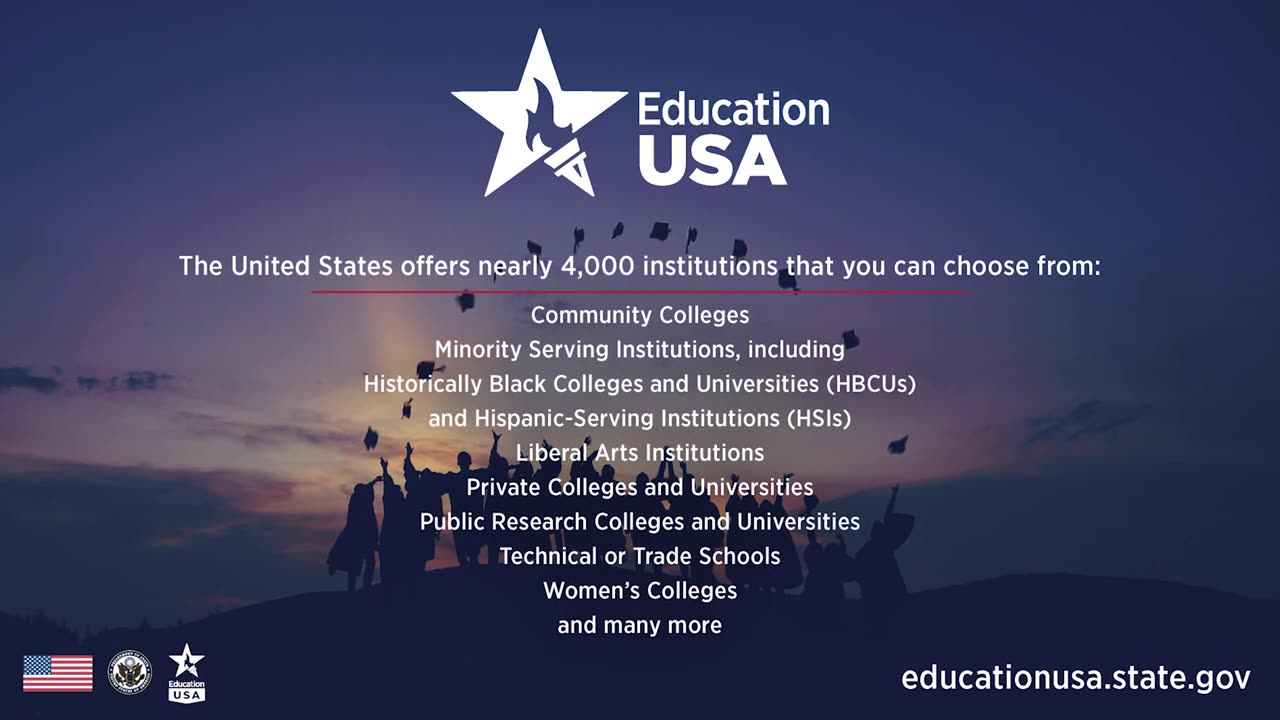Premium Only Content

Diversity of U.S. Higher Education Institutions #StudyWithUS / Must Watch
This diversity offers students options to specialize in a variety of academic disciplines and even gain employment training.
Nearly 4,000 accredited institutions make up U.S. higher education in the United States. Unlike many countries, U.S. higher education institutions are not centrally organized or managed, but are accredited on a national or regional level by independent accrediting bodies.
A variety of institution types offer higher-education degrees. Liberal arts institutions, for example, offer courses in the arts, humanities, languages, and social and physical sciences. The majority of liberal arts institutions are private. Private colleges and universities are funded by a combination of endowments, gifts from alumni, research grants, and tuition fees. Private colleges and universities are usually smaller than public institutions and can have a religious affiliation or be single-sex schools.
Not sure what certain U.S. higher education words mean? Click here for definitions.
Community colleges are another option and provide two-year associate degree programs to prepare students to continue studies for an undergraduate degree or help them gain occupational skills for immediate employment. State colleges and universities, also called "public universities," were founded and subsidized by U.S. state governments to provide a low-cost education to residents of that state. Public universities generally offer access to research opportunities and classes in a wide variety of fields of study. These universities tend to be very large and generally admit a wider range of students than private universities. Each student's interests will guide his/her choice among the many possibilities.
Regardless of the institution type, in the United States, students typically earn credits for courses they take and these credits count towards the completion of a program. Courses are often divided into "core" subject areas to provide the foundation of the degree program and "major" courses to provide specialization in a subject area. Students can also take "elective" courses to explore other topics of interest for a well-rounded educational experience.
The U.S. academic calendar typically runs from September to May and can be divided into two academic terms of 16-18 weeks known as semesters. Alternatively, some schools may operate on a quarter or trimester system of multiple terms of 10-12 weeks.
With the variety of available U.S. higher education options, students are sure to find the right fit for their academic, financial, and personal needs.
-
 1:58:10
1:58:10
Robert Gouveia
7 hours agoMatt Gaetz REJECTS Report, Sues Committee; Luigi Fan Club Arrives; Biden Commutes; Festivus Waste
61.9K70 -
 58:10
58:10
Kimberly Guilfoyle
9 hours agoAmerica is Back & The Future is Bright: A Year in Review | Ep. 183
52.1K50 -
 3:03:27
3:03:27
vivafrei
14 hours agoEp. 242: Barnes is BACK AGAIN! Trump, Fani, J6, RFK, Chip Roy, USS Liberty AND MORE! Viva & Barnes
100K59 -
 8:09:50
8:09:50
Dr Disrespect
12 hours ago🔴LIVE - DR DISRESPECT - MARVEL RIVALS - GOLD VANGUARD
181K30 -
 1:15:00
1:15:00
Awaken With JP
11 hours agoMerry Christmas NOT Happy Holidays! Special - LIES Ep 71
150K122 -
 1:42:21
1:42:21
The Quartering
12 hours agoTrump To INVADE Mexico, Take Back Panama Canal Too! NYC Human Torch & Matt Gaetz Report Drops!
121K98 -
 2:23:15
2:23:15
Nerdrotic
12 hours ago $0.77 earnedA Very Merry Christmas | FNT Square Up - Nerdrotic Nooner 453
95.3K11 -
 1:14:05
1:14:05
Tucker Carlson
11 hours ago“I’ll Win With or Without You,” Teamsters Union President Reveals Kamala Harris’s Famous Last Words
184K346 -
 1:58:31
1:58:31
The Dilley Show
11 hours ago $1.42 earnedTrump Conquering Western Hemisphere? w/Author Brenden Dilley 12/23/2024
143K39 -
 1:09:59
1:09:59
Geeks + Gamers
12 hours agoSonic 3 DESTROYS Mufasa And Disney, Naughty Dog Actress SLAMS Gamers Over Intergalactic
97.2K21